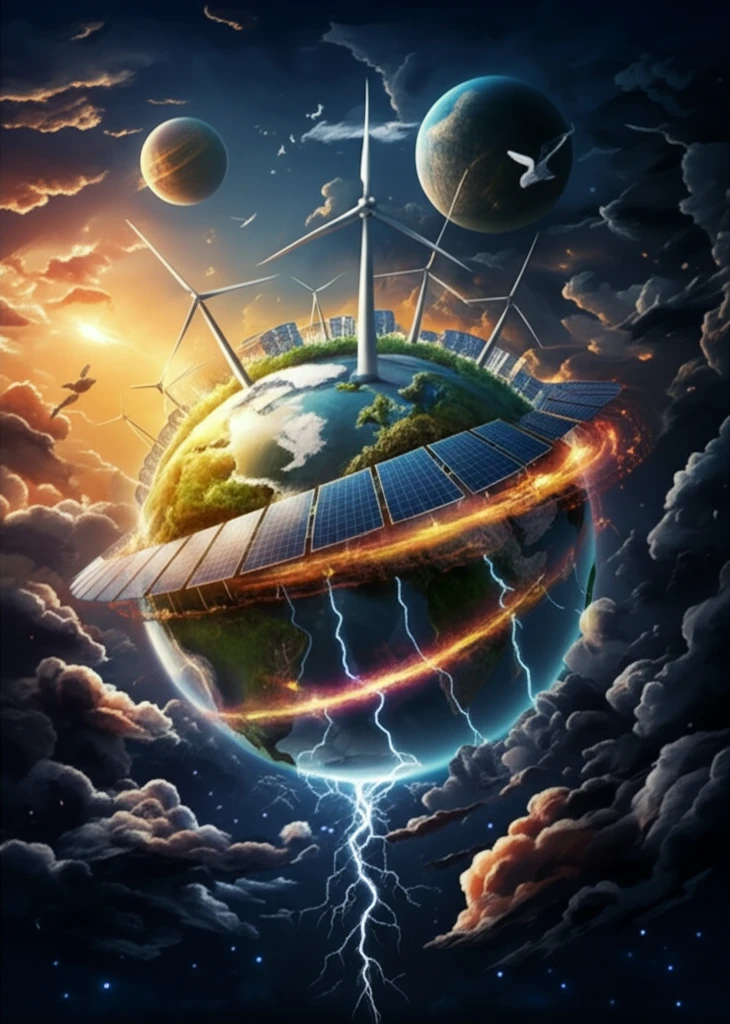
Powering Tomorrow: Navigating the Future of Renewable Energy
"A look into the resources and challenges of meeting global energy needs with renewables by 2050"
The quest for sustainable energy solutions has never been more critical. As the world grapples with the impacts of climate change and the limitations of fossil fuels, renewable energy (RE) stands as a beacon of hope. The transition, however, is complex and fraught with challenges. This article explores the feasibility of relying on renewable resources to meet global energy demands by 2050, examining the potential, limitations, and technological advancements needed to achieve this ambitious goal.
In 2017, the United Kingdom marked a symbolic milestone: its first coal-free day in centuries, signaling a shift away from traditional energy sources. Historically, the Industrial Revolution was fueled by coal, with global primary energy use around 20.35 EJ in 1800. Today, the energy landscape is dramatically different, with total primary energy consumption reaching 574 EJ, according to the International Energy Agency (IEA). Renewable sources account for only a fraction of this, primarily biomass used for heating and cooking in developing nations.
Despite growing awareness and efforts to promote renewable energy, its share of the global energy mix has been slow to increase. The future of energy hinges on overcoming significant obstacles and harnessing the full potential of renewable resources. As we look ahead to 2050, the path to a renewable energy future requires careful consideration of resources, technologies, and the environmental and economic factors at play.
The Renewable Energy Landscape: Opportunities and Challenges

The potential of renewable energy sources is vast, but their effective utilization requires addressing several critical factors. Solar, wind, hydro, biomass, and geothermal energy each offer unique benefits and face distinct challenges. While solar energy boasts an almost inexhaustible resource base, its intermittent nature necessitates advanced storage solutions. Wind energy, despite significant growth, is constrained by resource limitations and public opposition to turbine placement. Hydroelectricity, a mature technology, is largely exploited in developed countries, leaving untapped potential primarily in Asia, Africa, and South America.
- Improving energy storage solutions to address intermittency.
- Balancing biomass energy production with food security and ecosystem preservation.
- Overcoming geographical limitations for geothermal and hydroelectric power.
- Reducing costs and improving the efficiency of solar and wind technologies.
Looking Ahead: A Sustainable Energy Future
The path to a fully renewable energy future by 2050 is challenging, but achievable. Success depends on overcoming technical and economic barriers and adopting sustainable practices that balance energy needs with environmental and social considerations. As technology advances and costs decrease, renewable energy sources are poised to play an increasingly vital role in meeting global energy demands. A high global carbon price is likely to be in place, with the price having progressively risen over time. In 2016, fossil-fuel use was still increasing globally. The coming decades will be critical in shaping the future of energy, requiring collective action from governments, industries, and individuals to drive the transition towards a sustainable and resilient energy system.
